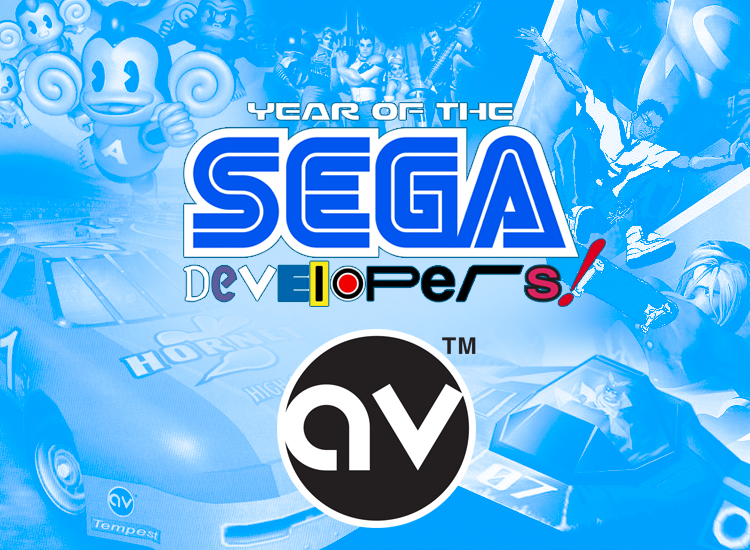 As we hit the halfway point of the Year of the SEGA Developers, we turn our attention to a favorite of ours: Amusement Vision. Okay, so being a SEGA fan site, every SEGA developer is our favorite. But just look at Amusement Vision’s portfolio: imaginative new games like Monkey Ball and Ollie King , follow-ups to classic franchises including Space Harrier’s Planet Harriers, Daytona USA 2001, and Spikeout and Virtua Striker sequels. Amusement Vision also holds the distinction of being the first SEGA developer to take on a Nintendo franchise with the much loved F-Zero GX and F-Zero AX.
As we hit the halfway point of the Year of the SEGA Developers, we turn our attention to a favorite of ours: Amusement Vision. Okay, so being a SEGA fan site, every SEGA developer is our favorite. But just look at Amusement Vision’s portfolio: imaginative new games like Monkey Ball and Ollie King , follow-ups to classic franchises including Space Harrier’s Planet Harriers, Daytona USA 2001, and Spikeout and Virtua Striker sequels. Amusement Vision also holds the distinction of being the first SEGA developer to take on a Nintendo franchise with the much loved F-Zero GX and F-Zero AX.
As is customary for a developer month kick-off article, join us as we look back on how Amusement Vision came to be, their library of games, and where the staff are now!
The History
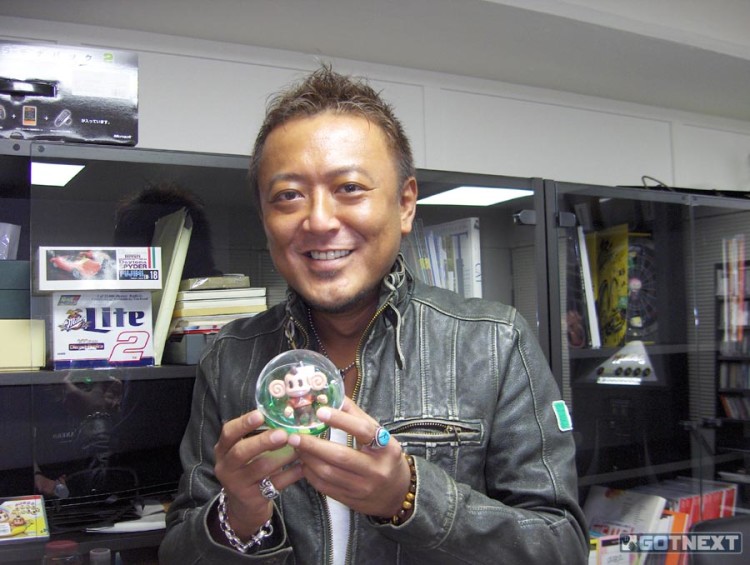
[Image credit: The Next Level]
Formed in 2000, Amusement Vision was a part of SEGA’s larger initiative at the time to give their internal development teams more individual freedom and unique identities. Toshihiro Nagoshi, who formerly worked with AM2 on Daytona USA and Virtua Racing to name just a few, managed Amusement Vision following a leadership role at Sega AM11. SEGA historians have yet to sort out AM11’s history and output, all that is known is that the team formed in the late 90s and focused on arcade output. The only game accredited to AM11 was Spikeout: Digital Battle Online which listed the developer as Team Spikeout.
With Nagoshi at the helm of the studio, the team focused almost exclusively on arcade titles including sequels and revisions of games worked on by Nagoshi at AM2 and AM11. Amusement Vision’s greatest claim to fame was the Monkey Ball series, which saw three titles produced under the Amusement Vision banner and has since seen over twenty games released over the span of fourteen years. In 2005, after another restructure, Amusement Vision became New Entertainment R&D Department. While several internal SEGA studios lost their identity in this era, by either being disbanded our merged into other teams, Amusement Vision and Toshihiro Nagoshi remained largely unscathed. From 2005 to 2006 the team focused on console games including Spikeout: Battle Street and Super Monkey Ball Deluxe for Microsoft’s Xbox and Super Monkey Ball Deluxe for the PS2.

New Entertainment R&D Dept.’s greatest contribution, and a turning point for Nagoshi, was the release of Yakuza and Yakuza 2. Both games kicked off a long running series that sees releases to this day and is one of SEGA of Japan’s biggest franchises. Yakuza was such a success that the team reformed into CS1 Team, publicly known as Ryu ga Gotoku Studio (Ryu ga Gotoku being the franchise’s name in Japan, which translates to “Like a Dragon”). The team exists to this day and is headed by Nagoshi, however Nagoshi’s successes have since led to larger roles within the company. Currently Nagoshi is Chief Creative Officer of SEGA. Suffice to say, Amusement Vision and Toshihiro Nagoshi had an incredibly successful run and the team continue to reap the benefits to this day.
The Games
 Daytona USA 2001, 2000: Daytona USA 2001, known in North America simply as Daytona USA, is an update to the 1994 arcade and SEGA Saturn classic released exclusively to the Dreamcast. Rather than being a sequel to the original (that honor goes to 1998’s Daytona USA 2: Battle on the Edge and the Power Edition revision), Daytona USA 2001 includes all features found in the Saturn original and the revised Championship Circuit Edition but offers improved graphics, new car mods, remixed music, and all tracks can be played in mirrored, reverse and mirror-reverse modes as well as a new “championship mode”.
Daytona USA 2001, 2000: Daytona USA 2001, known in North America simply as Daytona USA, is an update to the 1994 arcade and SEGA Saturn classic released exclusively to the Dreamcast. Rather than being a sequel to the original (that honor goes to 1998’s Daytona USA 2: Battle on the Edge and the Power Edition revision), Daytona USA 2001 includes all features found in the Saturn original and the revised Championship Circuit Edition but offers improved graphics, new car mods, remixed music, and all tracks can be played in mirrored, reverse and mirror-reverse modes as well as a new “championship mode”.
Toshihiro Nagoshi, Chief Designer, Producer and Director of the 1994 original returned to Daytona USA 2001 as Producer, Game Director and Design Director making this rerelease Nagoshi’s most involved Daytona USA project since the original – Nagoshi only served as producer and advisor on past sequels and revisions.
Slashout, 2000: Released to NAOMI arcade hardware, Slashout was the third installment in SEGA’s 3D beat ’em up Spikeout series which began with Spikeout: Digital Battle Online. Rather than taking place on city streets, Slashout features a fantasy setting but retains the combat controls of previous games.

Monkey Ball, 2001: Arguably Amusement Vision’s most successful franchise and one of SEGA’s longest running new franchises in the third party era, Monkey Ball released to NAOMI arcade hardware worldwide in 2001. The Monkey Ball formula is incredibly simple, and has gone largely unchanged over the past 14 years. One of three monkeys are placed inside a translucent ball and using a banana shaped joystick, players tilt the environment surrounding the monkey ball causing it to roll through various obstacle courses. Along the way, players collect Dole branded bananas which grant the player additional lives. While the arcade original has never seen release to consoles, the home console version of Super Monkey Ball contains all the stages found in the arcade original.
 Spikers Battle, 2001: Released to NAOMI arcade hardware in Japan, Spikers Battle is the fourth game in the Spikeout series. Leaving the fantasy realm of the third game and returning to the gritty streets, Spikers Battle retains the series gameplay but places players in an arena making it much more of a traditional versus fighting game.
Spikers Battle, 2001: Released to NAOMI arcade hardware in Japan, Spikers Battle is the fourth game in the Spikeout series. Leaving the fantasy realm of the third game and returning to the gritty streets, Spikers Battle retains the series gameplay but places players in an arena making it much more of a traditional versus fighting game.
However unlike games like Virtua Fighter, players are not always facing their opponent, making Spikers Battle more akin to free-roaming fighters like Capcom’s Power Stone.
 Virtua Striker 3, 2001/Virtua Striker 3 Ver.2002, 2002: SEGA’s 3D football/soccer series Virtua Striker was another long running franchise to fall under Amusement Vision’s control, with the team releasing Virtua Striker 3 to Japanese and European arcades, utilizing SEGA’s NAOMI 2 hardware. The following year the team released a new version of the game, dubbed Virtua Striker 3 ver. 2002. This version ran on the Triforce arcade board which was jointly developed by SEGA, Nintendo, and Namco, and was based upon Nintendo’s GameCube. As such, the game not only saw a worldwide release in arcades, but was also released on the GameCube to the three major territories. While the home release retained the arcade title in Japan and Europe, the American release was simplified to Virtua Striker 2002.
Virtua Striker 3, 2001/Virtua Striker 3 Ver.2002, 2002: SEGA’s 3D football/soccer series Virtua Striker was another long running franchise to fall under Amusement Vision’s control, with the team releasing Virtua Striker 3 to Japanese and European arcades, utilizing SEGA’s NAOMI 2 hardware. The following year the team released a new version of the game, dubbed Virtua Striker 3 ver. 2002. This version ran on the Triforce arcade board which was jointly developed by SEGA, Nintendo, and Namco, and was based upon Nintendo’s GameCube. As such, the game not only saw a worldwide release in arcades, but was also released on the GameCube to the three major territories. While the home release retained the arcade title in Japan and Europe, the American release was simplified to Virtua Striker 2002.
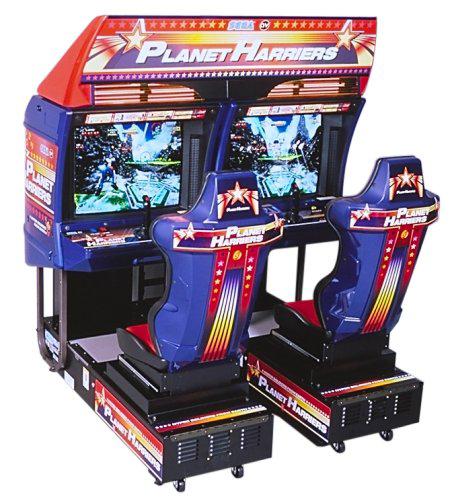
Planet Harriers, 2001: Planet Harriers was a unique entry to the classic Space Harrier franchise which brought the series into the third dimension. Borrowing some ideas from SEGA’s own Panzer Dragoon, Planet Harriers featured on-rails 3D flying and shooting. Expanding on the original Space Harrier games, Planet Harriers featured four selectable human characters as well as Fantasy Zone‘s own Opa-Opa as a secret character, furthering the notion that both franchises exist in the same universe. In an effort to make the game a bit easier than past titles, a health bar was added and enemies can be locked onto. Also, the game features a collectable currency that can be traded in for upgrades at the Star Shop, which functions the same way as Fantasy Zone‘s Parts Shop and even features a remix of the Parts Shop theme.
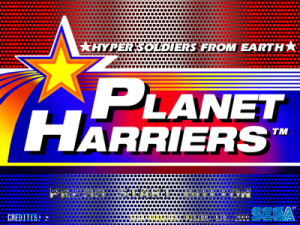 Planet Harriers is one of the few games released to SEGA’s Hikaru arcade board and the only Amusement Vision title on the hardware. Hikaru was essentially NAOMI hardware with superior graphics capabilities. Other games to utilize Hikaru include Brave Firefighters, Air Trix, and Star Wars Racer Arcade. Due to high costs, Hikaru was abandoned and SEGA continued NAOMI and NAOMI 2 development. Unfortunately, Planet Harriers only saw a worldwide release to arcades and has since never appeared on consoles.
Planet Harriers is one of the few games released to SEGA’s Hikaru arcade board and the only Amusement Vision title on the hardware. Hikaru was essentially NAOMI hardware with superior graphics capabilities. Other games to utilize Hikaru include Brave Firefighters, Air Trix, and Star Wars Racer Arcade. Due to high costs, Hikaru was abandoned and SEGA continued NAOMI and NAOMI 2 development. Unfortunately, Planet Harriers only saw a worldwide release to arcades and has since never appeared on consoles.
 Super Monkey Ball, 2001/Super Monkey Ball 2, 2002: The Monkey Ball arcade game made the transition to home consoles with the release of Super Monkey Ball and Super Monkey Ball 2 to Nintendo’s GameCube in 2001 and 2002 respectively. Touted as an exclusive to Nintendo’s console, the original Super Monkey Ball was one of the three launch titles for the GameCube in Japan and was the only third-party launch title. The Monkey Ball series would go on to serve as launch software for several other consoles and handhelds including the Wii with Super Monkey Ball Banana Blitz, the 3DS with Super Monkey Ball 3D, the Nokia N-Gage with Super Monkey Ball, and the iPhone App Store with Super Monkey Ball.
Super Monkey Ball, 2001/Super Monkey Ball 2, 2002: The Monkey Ball arcade game made the transition to home consoles with the release of Super Monkey Ball and Super Monkey Ball 2 to Nintendo’s GameCube in 2001 and 2002 respectively. Touted as an exclusive to Nintendo’s console, the original Super Monkey Ball was one of the three launch titles for the GameCube in Japan and was the only third-party launch title. The Monkey Ball series would go on to serve as launch software for several other consoles and handhelds including the Wii with Super Monkey Ball Banana Blitz, the 3DS with Super Monkey Ball 3D, the Nokia N-Gage with Super Monkey Ball, and the iPhone App Store with Super Monkey Ball.
Along with the original arcade maps and characters, Super Monkey Ball and its sequel expanded on the original game with new characters, a plot, new maps and new hazards. In 2004, Americans saw a budget compilation of the two games titled Super Monkey Ball 2 Pack. While both games were exclusive to the GameCube, in 2005 Super Monkey Ball Deluxe released to the Playstation 2 and Xbox and contained 114 levels from Super Monkey Ball, 149 from its sequel and an additional 47 exclusive levels. This release also contains numerous other features, including mini games, from the Arcade/GameCube titles.

F-Zero GX/F-Zero AX, 2003: In 2003, SEGA and Nintendo stunned fans when it was announced that Amusement Vision would be working with Nintendo in co-developing a new entry in Nintendo’s futuristic racer F-Zero for the GameCube and for arcades. Titled F-Zero GX (G for GameCube, developed under the name F-Zero GC) and F-Zero AX (A for Arcade, developed under the name F-Zero AC), both games were created with the intention of interacting with one another. Since the arcade version ran on Triforce hardware, which was essentially a GameCube, this became very easy for SEGA and Nintendo. Those with the home release could bring their GameCube memory card to arcades, plug into the arcade machine, and read/write GX saved games and unlock content.
Gameplay-wise, GX/AX played similarly to the Nintendo 64’s F-Zero Xbut with some additions and changes including the ability to create new vehicles, a story mode, the removal of death race, and unique profiles and backstory’s for each pilot.
Ollie King, 2003/2004: Ollie King was released to SEGA’s Chihiro hardware in 2004, featuring a machine similar to the ones used for 1997’s Top Skater and 2001’s Air Trix. Like those games, players stand on a board in front of the game’s screen and control an in-game skateboarder as they make their way through a downhill course littered with half pipes and jumps. Where Ollie King stands out from the others is in its cel shaded graphics and music, all of which feels like it has been lifted from Smilebit’s 2002 game Jet Set Radio Future. Of course, the reason for this is because Ollie King featured the support of several Smilebit members and the music of Hideki Naganuma (including some great JSRF remixes), however in the end the game was released as an Amusement Vision game.
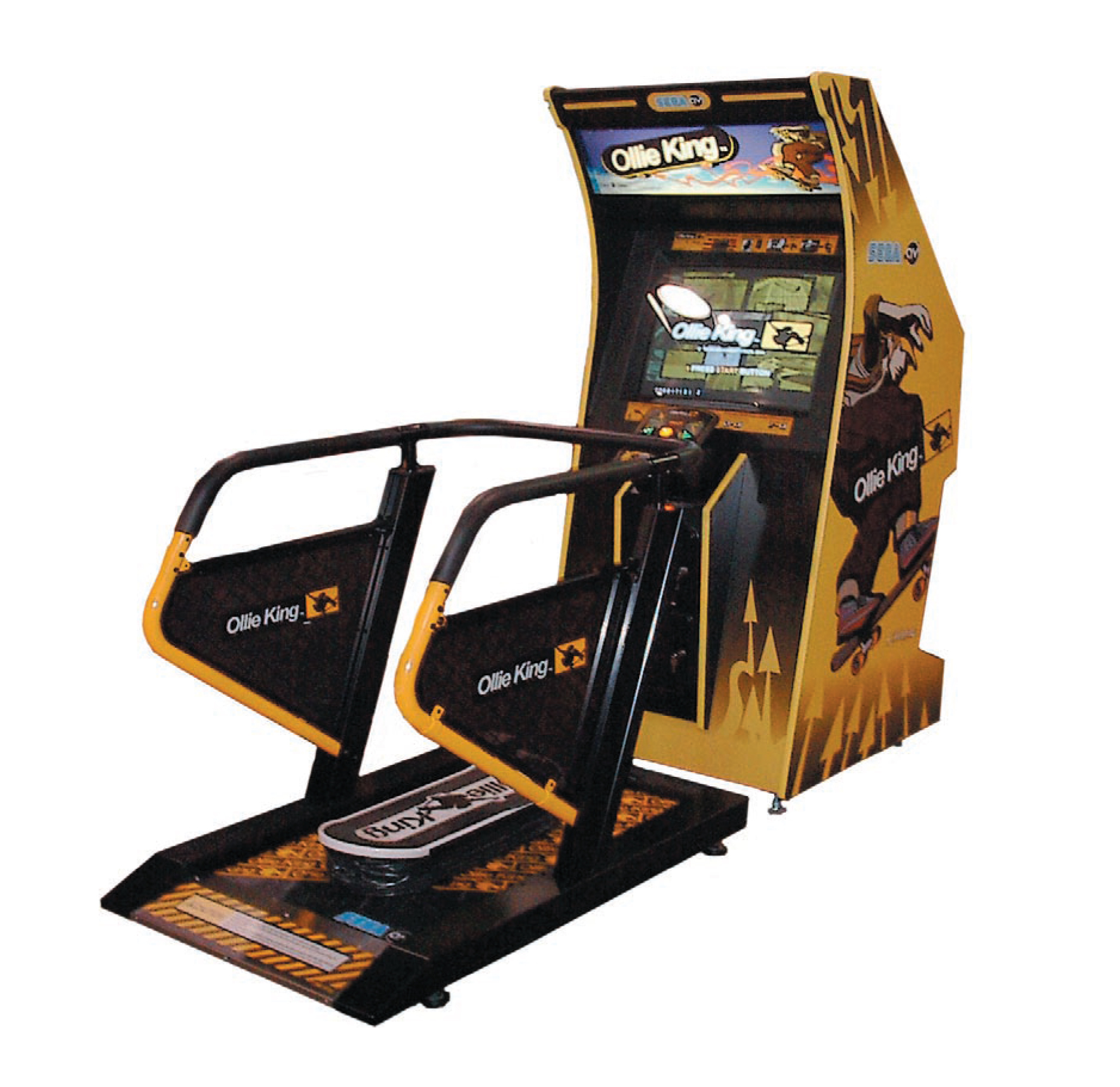 Even during early development, Smilebit accreditation seems non-existent with the only mentions of the developer being made by reporters at September 2003’s JAMMA arcade show who saw the Ollie King trailer, drew the Jet Set Radio comparisons, and assumed it was a Smilebit arcade game. I can only speculate that internally the game was a collaboration between Smilebit and Amusement Vision, however it was always intended to release as an Amusement Vision game. The fact that Smilebit continued to release their own games as late as June 2004 with J.League Pro Soccer Club o Tsukurou! ’04 shows that lack of Smilebit credit in Ollie Kingdid not stem from internal reorganization or the dissolving of teams.
Even during early development, Smilebit accreditation seems non-existent with the only mentions of the developer being made by reporters at September 2003’s JAMMA arcade show who saw the Ollie King trailer, drew the Jet Set Radio comparisons, and assumed it was a Smilebit arcade game. I can only speculate that internally the game was a collaboration between Smilebit and Amusement Vision, however it was always intended to release as an Amusement Vision game. The fact that Smilebit continued to release their own games as late as June 2004 with J.League Pro Soccer Club o Tsukurou! ’04 shows that lack of Smilebit credit in Ollie Kingdid not stem from internal reorganization or the dissolving of teams.
 Shining Force: Resurrection of the Dark Dragon, 2004: Released to Nintendo’s Game Boy Advance, Shining Force: Resurrection of the Dark Dragon was Amusement Vision’s only handheld title and is a remake of the Mega Drive game Shining Force: The Legacy of Great Intention from developers Sonic Software Planning and Climax. The game touted improved graphics with added visual effects and character patterns. Interestingly, Atlus, which is now owned by Sega-Sammy Holdings, published the game to the United States.
Shining Force: Resurrection of the Dark Dragon, 2004: Released to Nintendo’s Game Boy Advance, Shining Force: Resurrection of the Dark Dragon was Amusement Vision’s only handheld title and is a remake of the Mega Drive game Shining Force: The Legacy of Great Intention from developers Sonic Software Planning and Climax. The game touted improved graphics with added visual effects and character patterns. Interestingly, Atlus, which is now owned by Sega-Sammy Holdings, published the game to the United States.

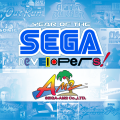
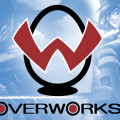
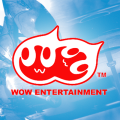
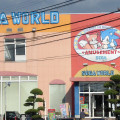
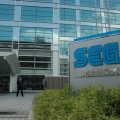
I’m really enjoying reading these initial summaries you give to each developer. They’re informative and a fun read. Thanks for putting them together!
Thanks Adam! It’s a lot of fun writing them and glad to hear readers are enjoying them!
Wow, the number of games Nagoshi has made with hardware similar to Dreamcast and the absence of ports really pissed me off back in the day and still does today.
Ollie King is interesting I know WoW made HotD2, but Typing of the Drad was made by Smilebit.
Employee information!
Mifune Satoshi is the one behind Virtua Striker, he worked at Sega since 1985 and done important AM2 titles in the early era like Dynamite Dux, GP Rider, Turbo Outrun and F1 Exhaust Note. He switched to AV.
The “Masayoshis” Kikuchi and Yokoyama, both became part of AV in 2003, in 2004 all Smilebit did was sports and Ps2 version of Typing of the Dead, before becoming part of New Entertainment in 2005.
The “Shining Force” person at Sega Yoichi Shimasato was indeed a Smilebit producer until he was part of AV in 2004, since then he produced the Shining “Force” titles (the Shining titles are by a different producer). Recently he did Hero Bank with Nagoshi.
All in all, from all the Dreamcast studios it does seem like AV was the most “unscathered”. Tough the Yakuza staff was made up of alot more than AV, lots of great talent from Smilebit was added to the mix as well.
Tough alot of Yakuza staff that was previously in Smilebit became involved in mobile development after Yakuza: Dead Souls
Thanks for the additional employee info Trippled, cool and informative stuff!
Thanks for the awesome feature! Sega AV and Toshihiro Nagoshi is my favorite!
Probably the penultimate game was FzeroGX/AX! Stunning game!
Also, I had hoped Ollie King would have come out for Xbox, i lament.
Also, PlanetHarriers! those two.